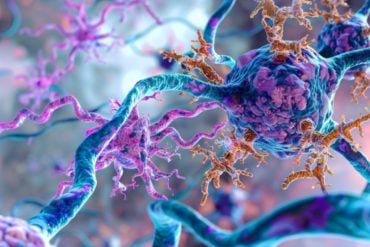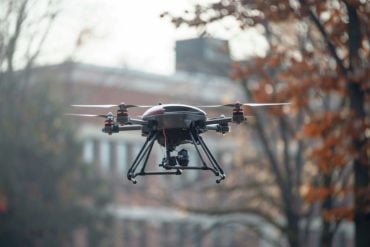Summary: Approximately 11% of 12th-grade students in the U.S. have used delta-8-THC in the past year, a psychoactive substance derived from hemp with effects similar to traditional THC. This analysis is part of the 2023 Monitoring the Future survey, highlighting concerns over the accessibility of delta-8 products to teenagers, especially given the absence of federal age restrictions for purchase.
With notable regional variations and higher usage in states without cannabis legalization or delta-8 regulations, the findings underscore the urgency for public health efforts to educate youths and their parents about the potential risks associated with delta-8 use. The study stresses the need for ongoing surveillance and research into the effects of delta-8 and other cannabinoids on adolescent health and behavior.
Key Facts:
- 11% of U.S. 12th graders reported using delta-8-THC in the past year, a psychoactive substance derived from hemp.
- Among delta-8 users, 91% also used marijuana, highlighting widespread use of cannabis products.
- The study, part of the 2023 Monitoring the Future survey, also revealed regional differences in delta-8 use, with higher rates in the South and Midwest and lower rates in states with cannabis legalization or delta-8 regulations.
Source: NIH
Approximately 11% of 12th-grade students across the United States reported past-year use of delta-8- tetrahydrocannabinol (delta-8-THC, or delta-8 for short), according to an analysis of data from the 2023 Monitoring the Future survey, which is funded by the National Institutes of Health. Delta-8 is a psychoactive substance that is typically derived from hemp, a variety of the Cannabis sativa plant. Delta-8 has intoxicating effects similar to delta-9-THC (delta-9), the primary THC component responsible for the “high” people may experience from using cannabis.
The researchers measured delta-8 use for the first time in 2023 to investigate the drug’s popularity among teens as more hemp-derived THC products enter the market and become more accessible.
Studies show an association between cannabis use and negative health impacts for teens, underlining the importance of monitoring use of delta-8 and other cannabis products among younger people.

Among those who reported delta-8 use, close to 91% also reported marijuana use, contributing to the approximately 30% of 12th graders overall who reported past-year marijuana use.
The survey also showed delta-8 use was more common in the South and Midwest regions and in states without cannabis legalization or delta-8 regulations. In contrast, levels of marijuana use did not differ by state-level cannabis policies.
The findings were published as a brief report in JAMA. The Monitoring the Future survey is conducted by researchers at the University of Michigan, Ann Arbor, and funded by the National Institute on Drug Abuse (NIDA), part of NIH.
“11% is a lot of people – that’s at least one or two students in every average-sized high school class who may be using delta-8. We don’t know enough about these drugs, but we see that they are already extremely accessible to teens,” said Nora Volkow, M.D., NIDA director.
“Cannabis use in general has been associated with negative impacts on the adolescent brain, so we must pay attention to the kinds of cannabis products teens are using, educate young people about potential risks, and ensure that treatment for cannabis use disorder and adequate mental health care is provided to those who need it.”
Delta-8 is one of over 100 cannabinoids in the Cannabis sativa plant. There is no federal minimum age requirement to purchase delta-8 products, which may be sold online or in gas stations and convenience stores.
In 2022, the U.S. Food and Drug Administration issued a consumer update warning of the serious health risks associated with use of delta-8 THC, including reports of adverse events involving use of delta-8 products and risks of exposure to toxic byproducts.
Numerous studies have found that adolescent cannabis use is associated with adverse effects on learning, memory, and attention; changes in brain development; and the development of cannabis use disorder and other psychiatric disorders, such as depression, psychosis and suicidality.
There are no existing medications to treat cannabis use disorder, and current treatments are primarily through psychosocial interventions, such as cognitive behavioral therapy. More research is needed to understand how delta-8, specifically, impacts these and other health outcomes.
This analysis of Monitoring the Future survey results also found that approximately 14% of 12th graders in the South and 15% in the Midwest reported delta-8 use, compared to 10% in the Northeast and 5% in the West. Around 14% of those in states without cannabis legalization reported delta-8 use, compared to 8% in states with legalization. In states without existing delta-8 regulations, 14% reported use compared to 6% in states with delta-8 legislation.
“Delta-8 products are out there where teens can easily find and buy them, and there needs to be continued surveillance of its use, as well as public health efforts to help youth and parents stay informed and safe,” said Alyssa Harlow, Ph.D., MPH, clinical assistant professor of population and public health sciences at the University of Southern California (USC), a member of the USC Institute for Addiction Science and lead author of the study.
“The national trends documented by the Monitoring the Future survey provide critical information for research and policy to keep pace with new developments in the market for cannabis products, which has seen considerable change in recent years,” said Richard A. Miech, Ph.D., team lead of the Monitoring the Future study at the University of Michigan and co-author of the study.
Because the survey is taken in school settings, students who were absent, not enrolled, or with less engagement in school – a known risk factor for drug use – may have been less likely to participate in the survey, the investigators note. This exclusion may have potentially led to an underestimation of adolescent use of delta-8.
Future work will need to assess delta-8 use in younger teens; include a larger survey sample across a wider range of states; and examine the use of other hemp-derived products, including delta-9 and delta-10.Top of Form
The Monitoring the Future survey is given annually to students in classrooms in eighth, 10th, and 12th grades who self-report their substance use behaviors over various time periods, such as past 30 days, past 12 months, and lifetime.
In 2023, the survey included questions on delta-8 for the first time, and they were administered to a randomly selected one-third of 12th grade students, resulting in 2,186 12th graders in 27 states. Given the prevalence of use found in the 2023 survey, questions on delta-8 have been added to future surveys for all age groups.
About this neurodevelopment and THC research news
Author: NIDA Press Office
Source: NIH
Contact: NIDA Press Office – NIH
Image: The image is credited to Neuroscience News
Original Research: The findings will appear in JAMA






